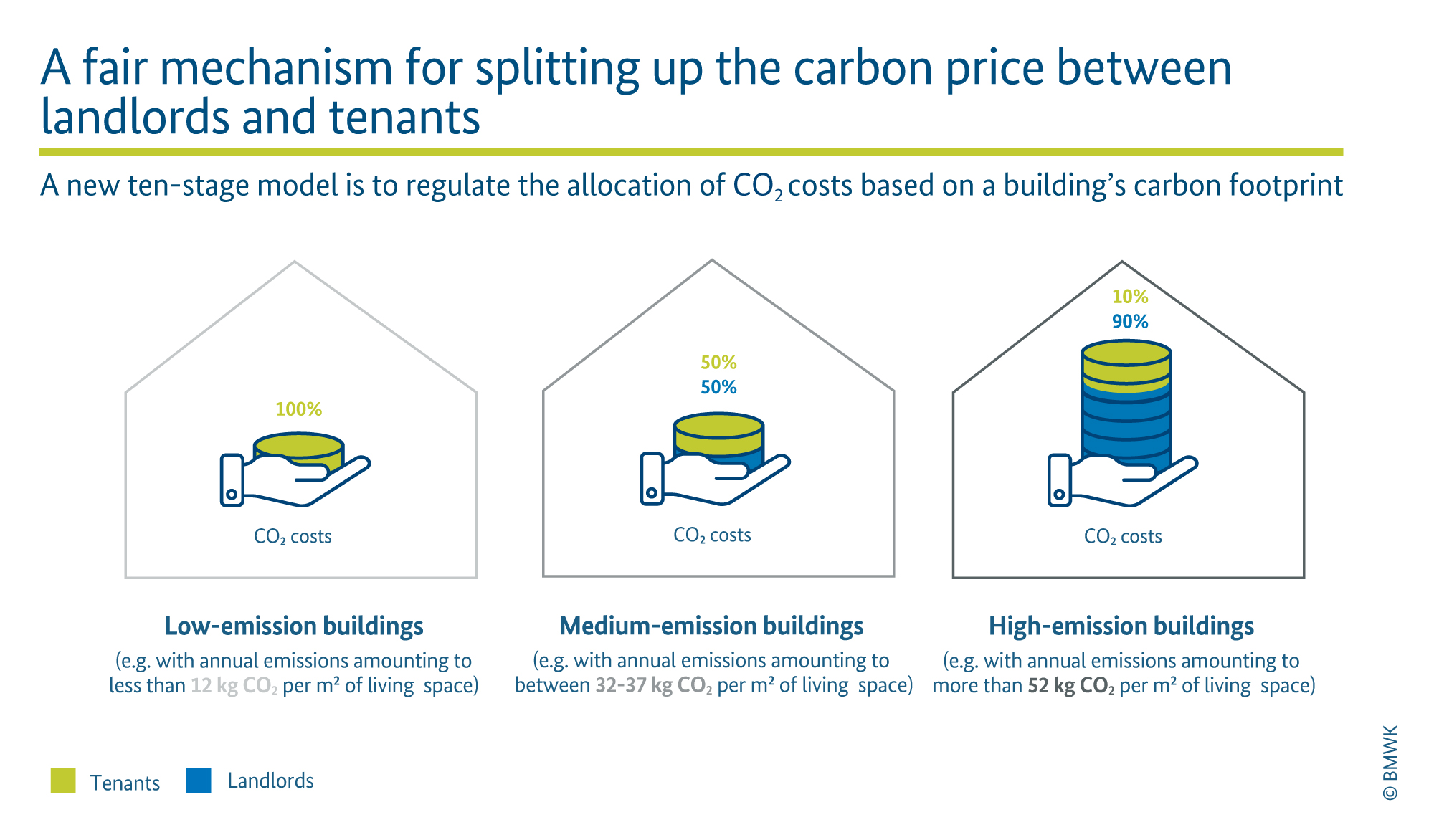Ten stages for a fair carbon price
A new model is to ensure a fair mechanism for splitting up the carbon price in buildings between landlords and tenants, setting an incentive for energy-efficient behaviour. The rationale behind this is quite straightforward: the lower a building’s carbon footprint is, the more both sides stand to gain.
 © BMWK
© BMWK
The goal of carbon pricing in the buildings sector is to incentivise landlords to conduct energy-efficient – and thus climate-friendly – renovations to their buildings in order to conserve energy. Tenants are to be encouraged to lower their energy consumption by turning down the heating. At present, it is still possible for landlords to pass on the carbon costs caused by the building’s fuel consumption entirely to their tenants.
In a new ten-stage model, the carbon costs for residential and non-residential buildings will be split between landlords and tenants according to a building’s energy performance, which will arguably make the system fairer. The aim is for the new rules to come into force on 1 January 2023.
A good carbon footprint will pay off for landlords and tenants alike
As a case in point, let’s take a building with an annual carbon footprint of more than 52 kilograms of CO2 equivalents per square metre of floor space (CO2 equivalents are a measure used to compare the emissions of different greenhouse gases based upon their global warming potential). With such a poor energy performance, the landlord will now have to assume 90% of the carbon costs whereas the tenant will pay only 10%. By contrast, an „efficiency house“ with an annual footprint of only 12 kilograms of CO2 equivalents per square metre will incur no carbon costs at all for the landlord while allowing tenants to save significant amounts of energy.
As far as non-residential buildings such as commercial spaces are concerned, the carbon costs – as laid down in the coalition agreement – will initially be halved. Given the great variety of sizes, kinds of uses and consumption patterns of non-residential buildings, there is still a lack of data with a view to being able to define the individual stages. Within two or three years, however, the necessary data could become available.
Since the beginning of 2021, there has been a price on CO2 emissions in Germany, and this also applies to buildings. Currently, an amount of €30 has to be paid for each tonne of CO2 that is emitted. The carbon price is to rise incrementally to €55 in 2025.

